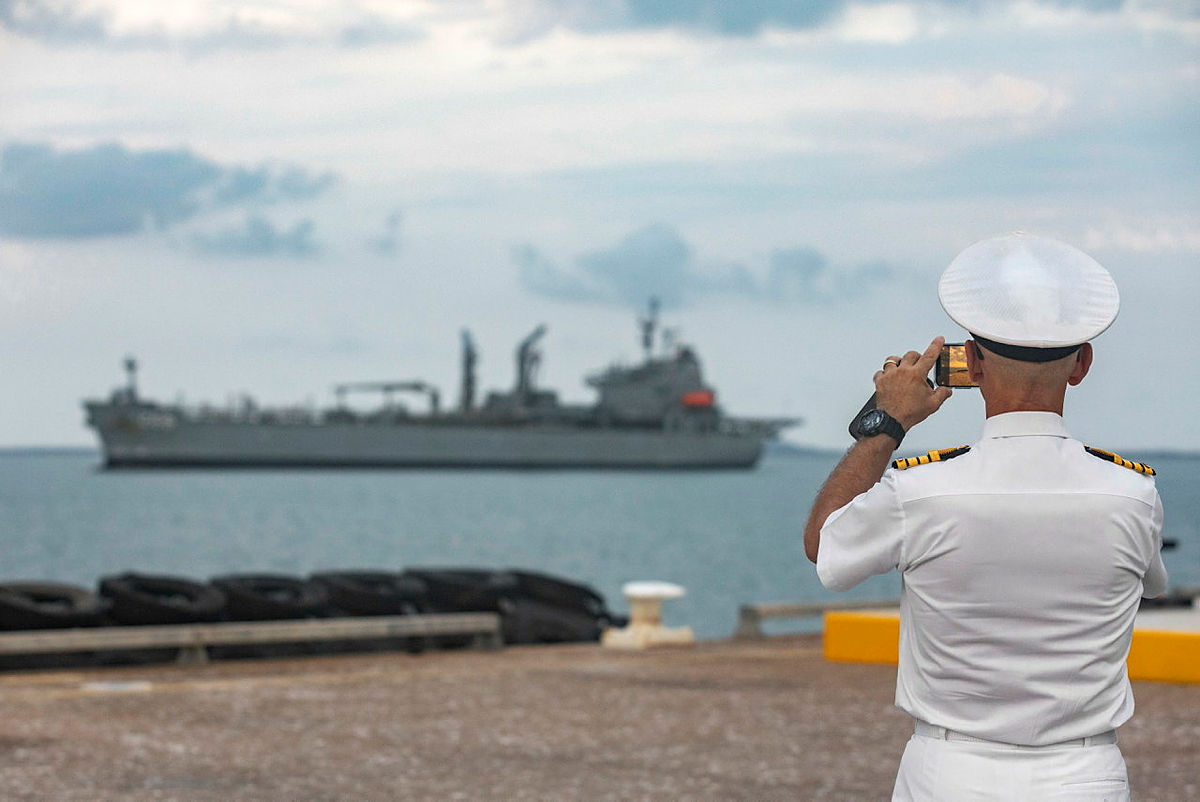
It seems we’ll be waiting until at least sometime in the first quarter of 2022 for the government to decide on the future of the Port of Darwin lease. In the meantime, the lost opportunities resulting from the lack of a coherent strategy for Australia’s most important northern port are starting to stack up. These opportunities don’t relate to overly simplistic debates about symbolism or passive intelligence collection; rather, they’re tied to fundamental challenges like national resilience and preparedness. Some recent US and Australian government announcements on liquid-fuel storage in Darwin illustrate these costs.
Let’s start at the beginning. Despite its vastness and remote geography, northern Australia has only limited capacity for bulk liquid-fuel storage. There’s little surplus capacity in the storage that does exist and it relies on just-in-time supply chains underpinned by dated assumptions. The storage capacity at Darwin’s Vopak Terminal, for example, was built on a 1996 assessment of fuel requirements.
For the Australian and US militaries, liquid-fuel supply is a challenge, but jet-fuel security is northern Australia’s Achilles’ heel. The ships supplying jet fuel to the region depart from Singapore and then arrive at Darwin’s port. The fuel is then transferred from the port to the Vopak Terminal, where almost all of northern Australia’s jet fuel is stored. The fuel for Royal Australian Air Force Base Tindal is then transported the 300 kilometres from Darwin to Katherine by trucks owned and operated by private companies.
For most of the year, airlines are the biggest consumers of jet fuel in Australia’s north. The Australian Defence Force’s use of 30 million litres annually pales in comparison with the commercial aviation sector’s consumption of 125 million litres.
It’s during major military exercises, when consumption rates rise rapidly, that the jet-fuel supply chain in northern Australia gets stretched, even though exercises are planned years in advance. Even in peacetime, jet fuel from Singapore is subject to availability and weather conditions. Despite this vulnerability, there’s no legislated or mandated requirement for a strategic reserve of jet fuel to be held in northern Australia. And it’s hard to find a commercial driver for the development of such reserve capacity without government intervention.
So, considering the increased strategic uncertainty and greater US military presence in northern Australia, what’s the plan?
In February 2020, the government announced that it was investing an extra $1.1 billion in Tindal, including increased fuel storage. That decision was arguably a costly band-aid solution to a supply-chain problem that can’t, and won’t, be fixed by market forces.
Then, in April last year, Energy Minister Angus Taylor announced that the government would establish a national oil reserve. Australia spent $94 million to buy oil at a historically low price. The investment has exposed one of the problems with Australia’s national liquid-fuel supply chains: a lack of bulk storage capacity.
In May 2020, Taylor announced the government’s three-part fuel-security package. The first part restates the government’s commitment to establish a government-owned oil reserve for domestic fuel security. The second is a commitment to work with the private sector to develop options to increase local storage as quickly as possible. The third involves the government considering a temporary change to fuel standards, though details on what impact that would have are scant.
Then, in September 2020, Prime Minister Scott Morrison announced that the government would spend $200 million on competitive grants to build an additional 780 megalitres of onshore diesel storage. In July 2021, as part of this program, the government announced that it would fund 50% of the Northern Territory Airport Development Group’s $60 million project to build an 80-megalitre diesel storage facility.
In September this year, the US government awarded a tender to construct a $270 million fuel storage facility in Darwin to support US defence operations in the region. This new 300-megalitre facility will be owned and operated by Florida company Crowley Government Services.
Historically, the US has been reluctant to make such investments outside of its sovereign territory. It’s hard not to conclude that this investment was a sign of a lack of US confidence in the Australian government getting strategic liquid-fuel reserves right in northern Australia.
The net result of all this activity is the expenditure of more than $330 million in Darwin, and another considerable sum at RAAF Base Tindal, on liquid-fuel storage. It appears, though, that each of these decisions occurred within bureaucratic siloes. Worse than that, it remains unclear whether these measures will address our most important northern airbase’s fuel supply-chain vulnerabilities. Would the outcome have looked any different if those involved had used a collaborative approach that synchronised their efforts and investments?
Liquid-fuel storage is just one component of a future Darwin port and harbour strategy. The broader strategy for the Darwin port and harbour, however, is no clearer than that for liquid-fuel storage and resilience.
Today, everyone seems to have a plan for Darwin’s port and harbour: the Northern Territory government, Defence, the US government, gas plant operator Inpex, port lessee Landbridge and the broader private sector. And many of those plans have very real budgets. However, there’s little evidence to suggest that the various ambitious visions are in any way shared, let alone aligned. The uncertainty about the future of the port lease has added further confusion. Still, the real problem is a lack of a coherent, single strategy.
It’s now time for a national discussion on the role of Darwin Port in Australia’s long-term strategic future.
We need to do some big thinking about Darwin Harbour, and the government needs to decide whether it wants to force a change in the existing port’s ownership or to build a new joint naval port instead. The federal and NT governments must produce a national security and economic strategy for Darwin port and harbour. And this strategy needs to have appropriate funding attached. Without that, further opportunities will be lost and resources wasted.

